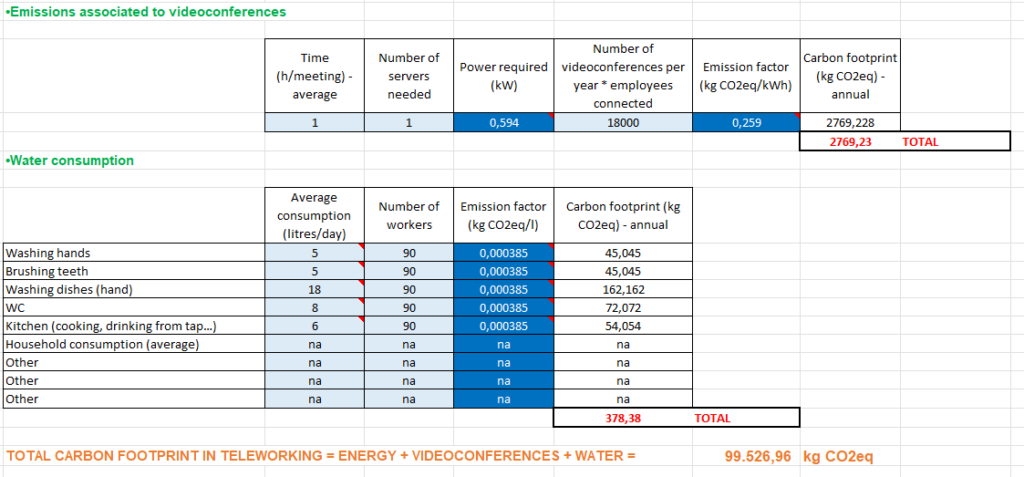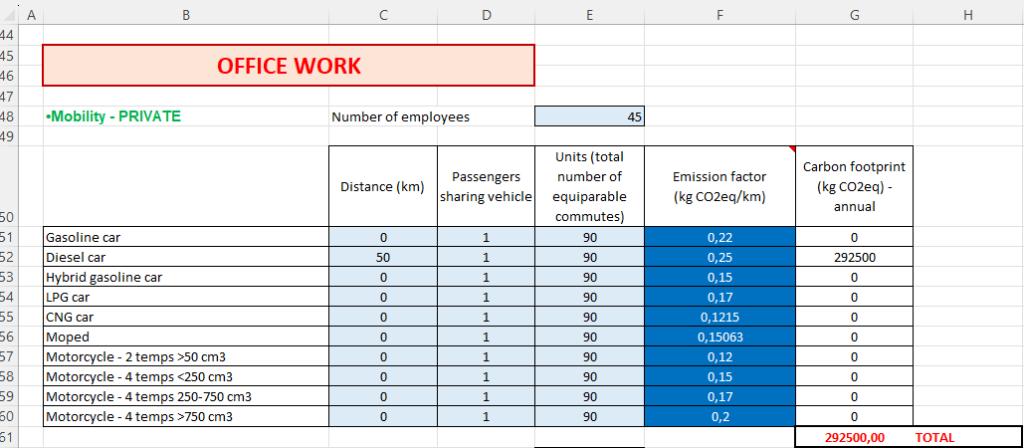In today’s sustainability-driven landscape, understanding the environmental impact of work habits has become more critical than ever. As organizations face increasing pressure to publish their greenhouse gas (GHG) emissions, including Scope 3 categories, it is essential to quantify and compare the carbon footprints of working from home versus working in the office. To address this need, I am developing a Carbon Footprint Calculator designed to empower individuals and organizations to estimate emissions under various work scenarios. This tool will help provide actionable insights, enabling more informed decisions for reducing workplace-related emissions. Here’s a breakdown of how I’m approaching this tool:
Teleworking: Understanding Energy Consumption
When working from home, several emission sources are linked to work activities. This includes the energy consumed during the working hours by:
- Air conditioning (AC)
- Boilers (for heating)
- Lighting
- Electronic devices (e.g., laptops, monitors)
Exclusions: General household energy consumption for appliances like fridges, washing machines, or dishwashers is omitted.

In the example presented, 90 employees teleworking 260 days a year.
Calculator Framework
- Power consumption: Average energy usage for each piece of equipment, sourced from the literature.
- Hours of use: The number of hours these devices operate during work hours.
- Number of units: The count of equipment used (e.g., 1 laptop or 2 lights).
- Allocation factor: Adjusts for shared equipment use (e.g., partners sharing heating or lighting during work hours).
Key Calculations
- Energy = Power × Time
- Emission factors for electricity or natural gas taken from the Oficina Catalana de Canvi Climàtic (OCCC)
Additional Considerations
- Videoconferencing emissions: For online meetings, I will integrate calculations based on the method outlined by Faber, 2021.

Office Work: Emissions Breakdown
Mobility – Private Transportation
- Employees commuting by private vehicles (i.e. 45 employees commuting 50 km with diesel car).
- Factor in carpooling to adjust emissions per person.
- Use of known distances and emission factors to calculate total emissions.

Mobility – Public Transportation
- For employees using buses, trains, or other public transit, emissions are estimated using distance and appropriate public transport emission factors according to the OCCC (i.e. 45 employees commuting 10 km by metro).

Office Energy Consumption
Energy use in offices often involves shared spaces, reducing the per-person footprint for:
- Climatization (AC, heating)
- Lighting
- Equipment like shared printers or modems.


Insight: Shared spaces typically reduce energy consumption per person, but is this savings enough to offset mobility emissions? It depends on the commuting habits and distances as well as on the number of people sharing the same space in the office.
The tool will allow users to:
- Calculate emissions for teleworking based on energy consumption and videoconferencing.
- Calculate emissions for office work, accounting for both mobility and energy usage.
Leave a Reply